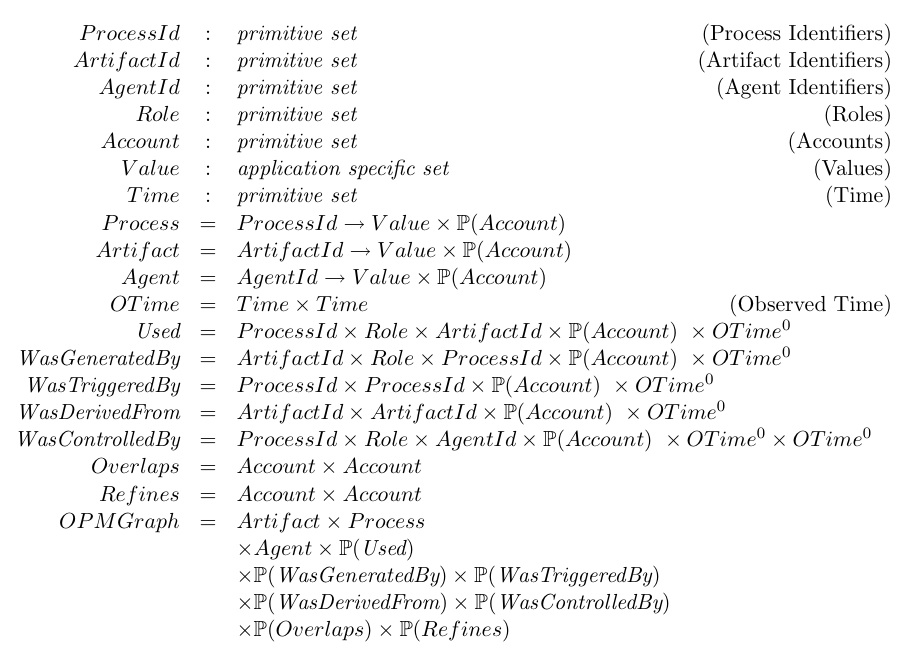Start of topic | Skip to actions
Open Provenance Model Contents
to top
- Introduction
- Basics
- Overlapping and Hierarchichal Descriptions
- Provenance Graph Definition
- Timeless Formal Model
- Inferences
- Formal Model and Time Annotations
- Time Constraints and Inferences
- Support for Collections
- Example of Representation
- Conclusion
- Best Practice on the Use of Agensts
- References
7 Formal Model and Time Annotations
The Open Provenance Model allows for causality graphs to be annotated with time annotations. In this model, time is not intended to be used for deriving causality: if causal dependencies exist, they need to be made explicit with the appropriate edges. However, time may have been observed during the course of a process, and we would expect such time information to be compatible with causal dependencies: the time of an effect should be greater than the time of its cause (for a same clock). Hence, time is useful in validating causality claims. In the Open Provenance Model, time may be associated to instantaneous occurrences in a process. We currently recognize four instantaneous occurrences, which have a reasonable shared understanding in real life and computer systems. Two of them pertain to artifacts, whereas the other two relate to processes. For artifacts, we consider the occurrences of creation and use, whereas for processes, we consider their starting and ending. The rationale for choosing instant time for the OPM model is the same as for adopting artifacts as immutable pieces of state. At a specific time, an object we consider will be in a specific state, which we refer to as artifact, and for which we can express the causality path that led to the object being in such a state. In some scenarios, occurrences of use or creation of objects and occurrences of starting or ending of processes may not be instantenous. To capture such scenarios, detailed processes and artifacts, and their respective causal dependencies, need to be made explicit, in order to be expressible in the OPM model. For instance, the starting of a nuclear power plant is not usefully modelled as an instantatenous occurrence, when one tries to understand failures that occurred during this activity; hence, this whole starting occurrence must be modelled by one process (or possibly several), which in turn have instanenous beginnings and endings. In the Open Provenance Model, time information is expected to be obtained by observing a clock when an occurrence occurs. Given that time is observed, time accuracy is limited by the granularity of the clock and the granularity of the observer's activities. Hence, while the notion of time we consider is instantaneous, the model allows for an interval of accuracy to support granularity of clocks and observers. In the OPM model, an instantaneous occurrence happening at time t is annotated by two observation times tm,tM, such that the occurrence is known to have occurred no later than tM and no earlier than tm. Hence, t ∈ [tm,tM].

Figure 13: Causality Graph Data Model and Time Annotations
Comments
to top
